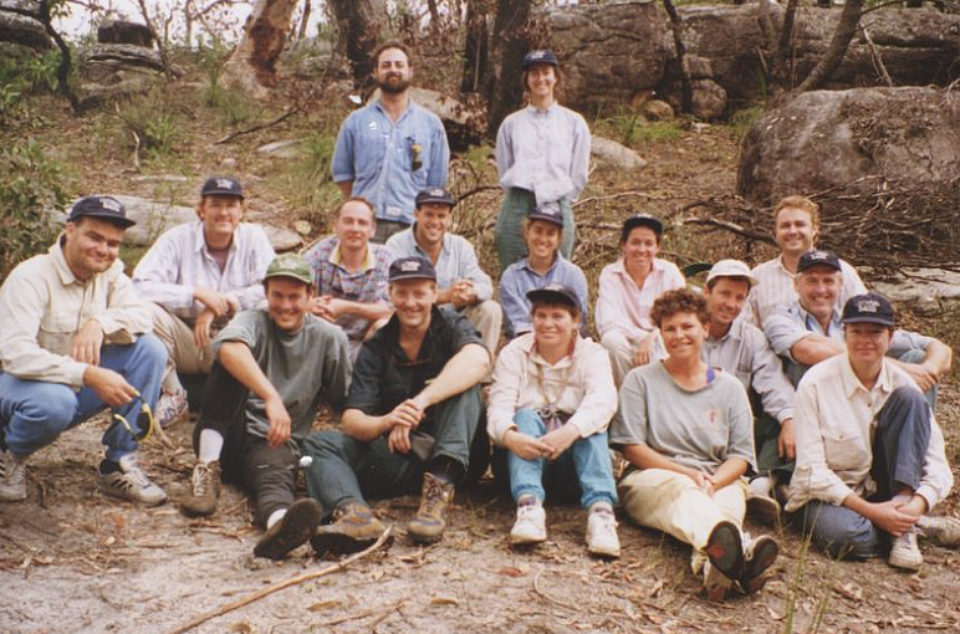
ICDA and BoardPro partnership unlocks digital governance tools for not-for-profits nationwide
Posted on 10 Dec 2025
Adele Stowe-Lindner, Executive Director, Community Directors The Institute of Community Directors…
Posted on 05 Aug 2023
By Greg Thom, journalist, Institute of Community Directors Australia

Not for profits have played a key role in implementing a $4.5 million federal government program aimed at giving disadvantaged students a seat at the digital table.
An entire generation of Australians are growing up in a world where online connectivity is taken for granted.
From relationships fostered through social media to internet-enabled learning at school, online shopping and applying for a first job, society has never been more digitally dependent.
Yet many socially and financially disadvantaged families have found themselves on the wrong side of the digital divide.
For those with school-aged children, a lack of internet access at home can lead to digital exclusion in the classroom, with students lacking the tech skills to keep up with their classmates who are enjoying the benefits of online learning.
A recent survey of 2000 families carried out by The Smith Family before the start of the current school year revealed:
This stark reality is behind the School Student Broadband Initiative (SSBI), a $4.5 million federal government program aimed at levelling the playing field.
Enabled via the National Broadband Network in conjunction with participating internet companies such as Telstra, the SSBI is designed to provide free home internet for one year to up to 30,000 unconnected families with school-aged students.
The program has recently achieved a major milestone, with the first 1000 families connected.
The federal government describes the SSBI as a “targeted affordability initiative” that will take effect while it considers longer-term solutions to address digital exclusion and education.
The not-for-profit sector has played a key role in implementing the program, with organisations such as The Smith Family and St Vincent de Paul helping identify and contact students and families eligible to participate.

The Smith Family CEO Doug Taylor said many Australians take digital access for granted, but for those who aren’t connected, the ramifications can be enormous.
“So much of what we do is now online, including work, banking, university and school,” said Mr Taylor.
“For children and young people especially, having reliable internet and access to a device is essential – they are the pencils and paper of a 21st century education.
“Without these, a child can be left behind in their education and this can go on to impact their future job prospects.”
The Learning for Life program is a key component of The Smith Family’s efforts to raise the digital literacy of students from low-income families.
Along with helping families to afford school essentials and educational mentoring support for their children, the program has provided more than 6,500 digital inclusion packs to students in need over the past two years.
Each pack contains resources such as a laptop computer, internet data and technical support aimed at supporting digital capability.
The Smith Family CEO Doug Taylor said of the 60,000 students participating in the Learning for Life program, an estimated one in six came from families with no internet access.
“This shows the real need for further digital support in the community.”
Mr Taylor said with an estimated 1.2 million Australian children living below the poverty line, it is critical to reach as many of these children as possible.
“We have set the target of 100,000 students supported under the Learning for Life program by 2027, and for all students to be digitally included.”
Mr Taylor said the building blocks of this digital capability were built at home.
“Access to a device and internet at home can support children to build their digital skills, learn how to safely use the internet, and participate in a world that is becoming ever more reliant on digital technology.”
For this reason, the SSBI program is not confined to school-aged children but extended to members of their family as well, who are also encouraged to learn how to engage with the online world.
Communications Minister Michelle Rowland said that in 2023, being connected to broadband is essential to maximise educational opportunities and take advantage of a digital society.
“It’s fantastic to see over 1,000 families who previously did not have internet at home can now enjoy the benefits of connectivity as a result of the Albanese Government’s investment,” she said.
Under the next phase of the program, work is now underway to widen the group of nominating organisations, which will also include MP’s.
“The (SSBI) program wouldn’t be possible without the constructive engagement from community organisations and charities, and I thank them for their work over the initial development period," said Ms Rowland.
“Being digitally connected is essential for all Australians to participate in our society and digital learning is crucial to our future education models and future careers.”
Mr Taylor said digital inclusion had proven to be a game-changer for the families The Smith Family works with through its education support program Learning for Life.
“I’ve spoken to parents with three children and each child has had to use data from a single phone to complete their schoolwork,” said Mr Taylor, describing such a process as unreliable, expensive and slow.
“No child should have to think about the cost of handing in an assessment or completing their homework. Nor should they have to rely on an unstable service to access their education.”
While the digital divide was already a significant issue before the pandemic, the move to remote learning increased challenges for students without online access at home.

Many of the internet-enabled systems taken up during covid, such as Google Classrooms and online parent-teacher interviews, are now a standard feature of schooling.
This makes it more important than ever to ensure families have the digital support they need to participate fully, but the deepening cost of living crisis makes this difficult.
Statistics from the latest Australian Digital Inclusion Index revealed that affordability remains central to closing the digital divide.
An estimated 67 per cent of Australians in the lowest income quintile would have to pay more than 10 per cent of their household income to gain quality, reliable connectivity.
“Being digitally connected is essential for all Australians to participate in our society and digital learning is crucial to our future education models and future careers,” said Mr Taylor.
“One in six Australian children and young people are living in poverty, and it’s not fair that many of them cannot access this necessary resource, which is why programs like the SSBI are so important.”
“We all must work together to bridge this digital divide, and ensure no child misses out on the opportunity to make the most of their education.”

Posted on 10 Dec 2025
Adele Stowe-Lindner, Executive Director, Community Directors The Institute of Community Directors…

Posted on 10 Dec 2025
The Australia Institute has called on the federal government to force Australian businesses to be…

Posted on 10 Dec 2025
Economic empowerment is essential to enabling recovery, restoring agency and preventing future…
Posted on 10 Dec 2025
A long-time advocate for rough sleepers in northern New South Wales has been named her state’s…

Posted on 10 Dec 2025
What a year 2025 has been, particularly at a national level where the Parliament and politics as we…

Posted on 10 Dec 2025
Anyone working in an organisation knows it: meetings follow one after another at a frantic pace. On…

Posted on 10 Dec 2025
As a qualified yoga instructor who learned the practice in her hometown of Mumbai, Ruhee Meghani…

Posted on 10 Dec 2025
Community Directors trainer Jon Staley knows from first-hand experience the cost of ignoring…

Posted on 10 Dec 2025
Stressed, overwhelmed, exhausted… if you’re on a not-for-profit board and these words sound…

Posted on 10 Dec 2025
The Institute of Community Directors Australia trains over 22,000 people each year, which gives us…

Posted on 09 Dec 2025
The late Sir Vincent Fairfax is remembered as a business leader, a chairman of AMP, and an active…

Posted on 08 Dec 2025
A pioneering welfare effort that helps solo mums into self-employment, a First Nations-led impact…